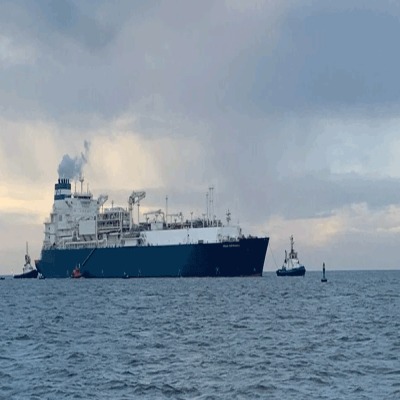

The liquefied natural gas (LNG) terminal in Germany's Elbe river port of Stade is set to receive its floating regasification vessel (FSRU) in February, marking a significant step in the country's efforts to enhance LNG import capacity. The FSRU, named the Transgas Force, will facilitate the transfer of seaborne gas cargoes into local pipeline grids. This development is part of Germany's strategy to reduce dependence on Russian pipeline gas, a reliance that became especially apparent after Moscow's invasion of Ukraine last year.
Johannes Killinger, the Managing Director and co-shareholder of the operating company Hanseatic Energy Hub (HEH), announced that the Transgas Force is expected to remain in Stade for three years, paving the way for the commissioning of a land-based regasification terminal. Killinger indicated that the final investment decision for the land-based terminal is imminent, with only formalities remaining to be completed.
HEH, having already secured buyers equivalent to 15% of Germany's annual gas demand for the land-based terminal, aims to replace the floating terminal by 2027. Looking ahead, there are plans for a potential conversion to ammonia as a carrier for zero-carbon hydrogen imports, aligning with efforts to transition away from fossil gas and promote greener energy systems. HEH's LNG licenses are valid until 2043, but Killinger suggested that a conversion to ammonia could occur sooner.
Joerg Schmitz, senior adviser for LNG at Dow, a chemicals company supporting HEH's activities, emphasised the role of ammonia, particularly when produced using renewable energy, in facilitating the transition to a low-carbon economy. Local expertise in saltwater electrolysis, used to produce hydrogen for Dow's chlorine needs, could contribute to the handling of ammonia. Additionally, Schmitz highlighted the adaptability of adjacent gas pipelines, electricity lines, and storage infrastructure to accommodate this shift toward greener energy sources.